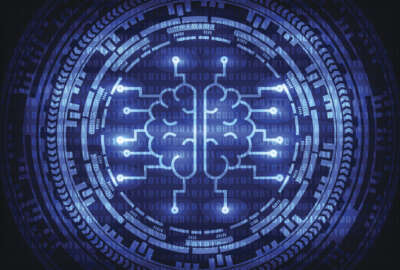

Fred Streitz, the chief AI scientist in DOE’s Artificial Intelligence and Technology Office, said all of the agency’s offices are using AI at some level, an...
The Energy Department, in all aspects of its work, is turning to artificial intelligence to accelerate its output.
DOE’s Office of Cybersecurity, Energy Security, and Emergency Response (CESER) is using artificial intelligence to monitor threats to the electric grid. Its inspector general is looking at AI to flag potential fraud.
Fred Streitz, the chief AI scientist in DOE’s Artificial Intelligence and Technology Office, said all of the agency’s offices are using AI at some level, and said the use cases are getting more advanced.
“It’s going to touch everything, in the same way that electricity now touches everything that happens. We believe that AI is going to wind up touching, in some way or another, almost every aspect of our lives going forward,” Streitz said last week at an AI conference hosted by the National Defense Industrial Association.
Irene Qualters, the associate lab director for simulation & computation at DOE’s Los Alamos National Laboratory, said the lab is working to harden AI algorithms against threats, improving the explainability of AI-produced results and quantifying the certainty AI models have in making predictions.
The lab is also looking at AI’s usefulness to study climate and natural disasters.
“AI is opening a whole new avenue of exploration and understanding,” Qualters said.
DOE’s AI and high-performance capabilities factored heavily into the Trump administration’s early response to the COVID-19 pandemic. The White House launched a COVID-19 High-Performance Computing Consortium in March 2020 to give coronavirus researchers access to the world’s most powerful supercomputers.
But as DOE weaves AI into all aspects of its mission, the stakes become higher, and the need to ensure AI-powered work is transparent and reliable becomes greater. The National Nuclear Security Administration, for example, uses AI to assess data as part of its non-proliferation work.
“Increasing use of AI in mission-critical areas where there are real-world consequences, we are working toward that. It’s a direction we need to go because of the inherent advantages of using these AI technologies to exactly do something like create a more resilient grid, but trustworthiness is an important component of that, and that’s another piece of research that’s being done actively,” Streitz said.
While DOE employs more than 10,000 scientists and engineers, Streitz said that the workforce only accounts for a “fraction of the brainpower” on AI research in the U.S. The agency, he added, relies on collaboration with other federal science agencies and the private sector.
Qualters said DOE’s AI research in some cases focuses heavily on infrastructure use cases, while the National Science Foundation supports some of the fundamental research behind AI.
NSF and the Army Research Office, for example, supported recent research at Carnegie Mellon University that pitted an AI program against six professional players in a game of poker.
Streitz said AI’s aptitude at poker, compared to its master of games like chess, marks a paradigm shift in the sophistication of these algorithms.
“You can’t just play the cards you’re dealt, you have to change your odds, and that means bluffing. But what is bluffing at the end of the day? Bluffing is lying. You have to pretend that you have cards you don’t have. And the notion that we can actually teach a computer how to do that — it understands that there are situations when it knows perfectly well what cards it has, and it knows … what all the odds are, and it simply decides, ‘now is a good time to fake it’ — that’s really a fundamental difference from, for instance, chess,” he said.
Copyright © 2024 Federal News Network. All rights reserved. This website is not intended for users located within the European Economic Area.
Jory Heckman is a reporter at Federal News Network covering U.S. Postal Service, IRS, big data and technology issues.
Follow @jheckmanWFED


